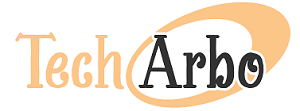User-Centric Design: How A Web Design And Development Company Prioritizes Your Audience?

A cornerstone of successful web initiatives in the ever-evolving digital world is user-centric design. It shifts the focus from what a company wants to communicate to what users need and expect. A web design and development company that prioritizes user-centric design can significantly enhance the user experience, driving engagement and fostering loyalty. Here’s an in-depth look at how these companies prioritize their audience and why it matters.
User-Centric Design
User-centric design, more commonly known as UCD, is a design philosophy that prioritizes the requirements, preferences, and behaviors of users during the design and development process. Instead of starting with a predetermined vision of what a website should look like or how it should function, user-centric design begins with extensive research into the target audience.
The Importance Of User Research
A web design and development company committed to user-centric design invests significant effort into understanding its audience. This involves various research methods such as:
- User Interviews And Surveys: These tools gather qualitative and quantitative data about user needs, preferences, and pain points.
- Analytics Review: Examining existing data to comprehend user behavior patterns, including the manner in which users navigate a website, the content they engage with, and the locations at which they abandon the site.
- Persona Development: Creating detailed user personas to represent different segments of the target audience helps in tailoring the design to meet diverse user needs.
- Usability Testing: Identifying usability issues and areas for development by observing users as they interact with prototypes or live sites.
By investing in these research methods, a web design and development company ensures that the design process is informed by real user data rather than assumptions.
Designing With The User In Mind
Once the user research phase is complete, the next step is to translate insights into actionable design elements. Here’s how a user-centric approach influences various aspects of web design:
- Information Architecture (IA): The website’s layout is intended to be user-friendly and intuitive. This means categorizing information in a way that makes sense to users and ensures they can find what they’re looking for with minimal effort.
- Navigation Design: Clear, consistent, and simple navigation menus help users move through the site seamlessly. A user-centric company often employs techniques such as breadcrumb trails and sticky navigation bars to enhance usability.
- Visual Design: The visual aspects, including colors, fonts, and imagery, are chosen not just for aesthetic appeal but also for usability. For instance, utilizing visual hierarchy to direct the user’s attention and ensuring that there is adequate contrast to facilitate readability.
- Responsive Design: In light of the diverse devices from which users access websites, a user-centric organization guarantees that its website is entirely responsive, ensuring that it delivers an optimal user experience on desktops, tablets, and smartphones.
- Content Strategy: Content is crafted to meet the needs of the user, providing value and clarity. This includes everything from the tone of voice to the length and format of the content.
Development Focused On Performance And Accessibility
A user-centric web design and development company doesn’t stop at design. The development phase is equally critical to ensure the site performs well and is accessible to all users.
- Performance Optimization: Fast load times are essential for user satisfaction. Developers focus on optimizing code, compressing images, and leveraging caching strategies to ensure the site loads quickly.
- Accessibility: The website must be accessible to users with disabilities, as it is both a legal and moral obligation in numerous regions. This includes implementing features like keyboard navigation, screen reader compatibility, and alt text for images.
Continuous Improvement Through Feedback
User-centric design is a continuous process, rather than a one-time endeavor. In order to implement iterative enhancements, a web design and development company continues to collect user feedback and analyze data following the website’s launch. This might involve A/B testing different design elements, analyzing heatmaps to see where users click, or conducting follow-up usability tests.
The Benefits Of User-Centric Design
Prioritizing user-centric design brings numerous benefits, both for the users and the business:
- Enhanced User Satisfaction: Repeat visits and increased engagement are the result of users’ increased contentment with a website’s ease of use and navigation.
- Increased Conversions: A design that is user-friendly reduces the friction in the user journey, thereby facilitating the completion of desired actions by users, such as purchasing or subscribing to a newsletter.
- Reduced Development Costs: Businesses can prevent the need for costly redesigns and adjustments after the launch by identifying and addressing usability issues early in the design process.
- Stronger Brand Loyalty: A positive user experience fosters trust and loyalty, encouraging users to become advocates for the brand.
Conclusion
In the competitive digital landscape, user-centric design is not just a trend but a necessity. A web design and development company that prioritizes its audience ensures that every aspect of the website is tailored to meet user needs and preferences. This approach not only enhances the user experience but also drives business success, making user-centric design a win-win for both users and companies.







